When anyone reads London Rail every article is faithfully written and research is intense (and by the way not a single cent is earned). Not only that the output has detail and facts which others who are often paid and almost certainly abled (including speech) simply don’t bother with. The latest from a certain London journal which was published 6th June 2025 is certainly one of those regular items where these sort of people with such prominence write articles that are factually incorrect. In this particular instance it was the one usual newspaper who are quite able to divulge a load of rubbish about the London Underground whilst making it look like some sort of gospel truth. For a start how can the ‘most intense’ underground station that is being referred to – barely have the footfall of the other stations on the same route of tube lines in order to justify what is being claimed?

A look at the above headlines ‘The ‘most intense’ London Underground station where there’s only 1 set of tracks for 3 lines… Three Tube lines have to squeeze into this pretty compact little station, meaning its rather full on trying to catch a train….’ might have one wondering which station exactly it is that has the aforementioned issue of squeezing three lines into one station.
Well there can’t be many of those! Except its disingenuous to suggest its just one station alone that has these problems. The station alluded to is Great Portland Street. There’s no doubt three tube lines do go through it – but that’s something which can be considered as barely being half the picture especially with the other assertions made in that article.

Apparently Great Portland Street’s not better built for purpose! Its little known yet also busy!
But what sets the station apart from others with a similar number of lines is its number of tracks. While others are better built for purpose, Great Portland Street has just one set of tracks, which trains on all three lines have to use.
The above assertion from that article is outrageous. It implies somehow that Great Portland Street station is a rarity in having just one set of tracks – and it could have been better built with perhaps more tracks. What about the stations all the way back to Liverpool Street? They’re all three train route/one set of tracks too! Some of those have vast amounts of passenger traffic and sport smaller platform sections than Great Portland Street!
As for three lines having to squeeze into Great Portland Street, well that’s a very misleading assertion as one can see. What about the next station on the line which is Euston Square – a station with TWICE the passengers as Great Portland Street – that’s 11.24 million passengers a year (2023). Euston Square has three train routes and a mere pair of tracks too! Besides, it also has a similar footprint to Great Portland Street. Further, Great Portland Street station has surface buildings and Euston Square doesn’t. Yet the former isn’t ‘better built for purpose’? It simply does not make sense. Certainly Great Portland Street station isn’t modern if that’s anything to come by – but that is because it is a historic Grade II listed station.
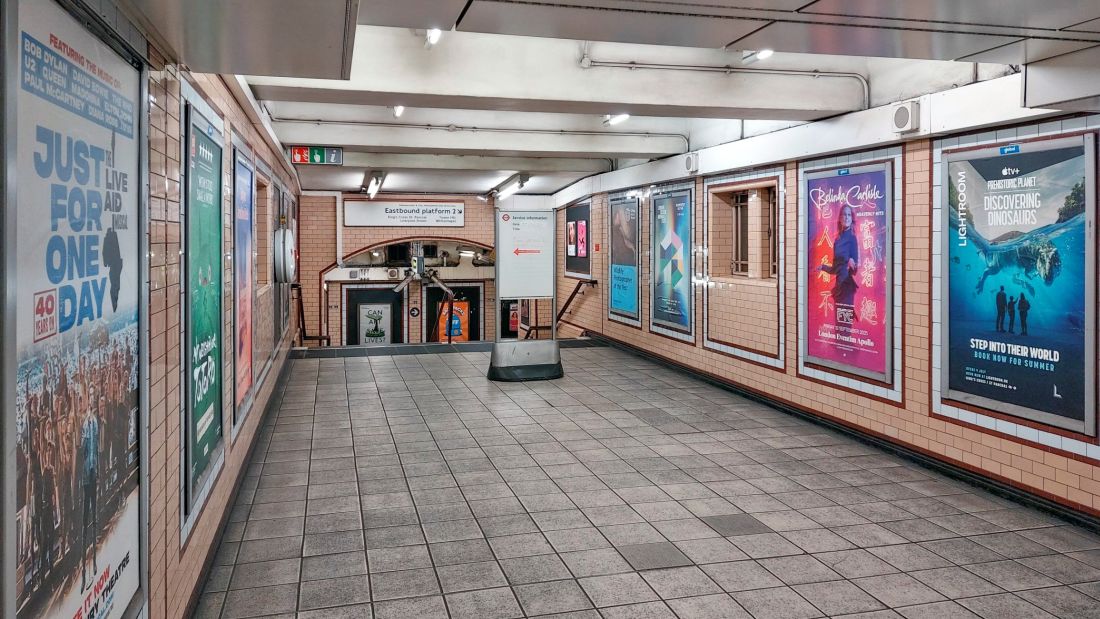
A footbridge wider than Euston Square and staircases that are unidirectional to assist passenger flows. Yet Great Portland Street station is not built for purpose?
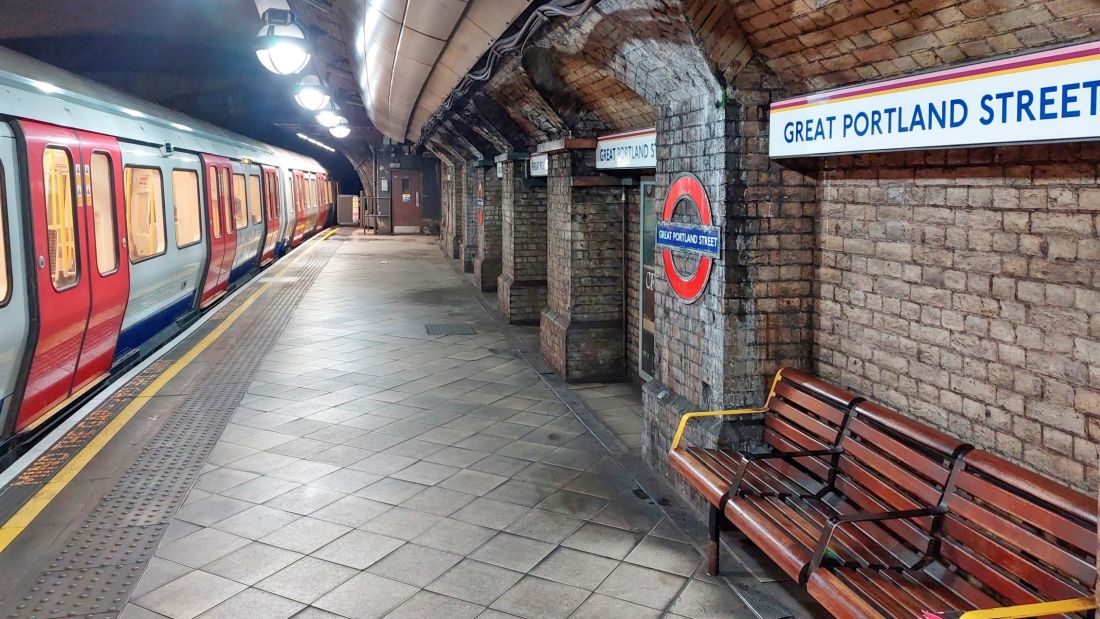
The luxury of having these large station recesses is that Great Portland Street has seating that’s set much further back – hence there’s more platform space available than at Euston Square or King’s Cross for example.
The very art of asserting just this one station alone with three routes/a pair of tracks squeezed into it amounts to some sort of huge problem is totally out of order – especially when there are others along the same section of Circle, Hammersmith and Metropolitan lines featuring three train routes and one set of tracks! Its a very crude assertion that has been made by My London – and not in a million years will those assertions possibly be backed up by facts – because there are none!
To attempt to try and make out Great Portland Street happens to be the smallest (and no doubt the only) London Underground station serving three lines and one set of tracks (thus carrying an implication that this particular station is one with major problems) amounts to what can only be considered pure drivel. For example Great Portland Street has very wide platforms on both sides of the tracks with a width that is quite constant – and its wider than some of the other stations on the same lines!
If some want to know, there are quite a number of passengers who will, for the sake of brevity, abandon any hope of awaiting their train at the other stations whether it be at Liverpool Street, Moorgate, Barbican, Farringdon, King’s Cross or Euston Square, and catch the first train to Great Portland Street where they can dwell in complete relaxation while waiting for their correct train to turn up (eg via Paddington or Finchley Road). And its because each and every one of those passengers prefers the more comforting atmosphere Great Portland Street station offers.
The assertion the station is the ‘most intense’ simply does not ring true in any way for any of those passengers – and that includes me – the author of London Rail! Like those many others I also regularly use Great Portland Street as a change over point where the correct train can be awaited.
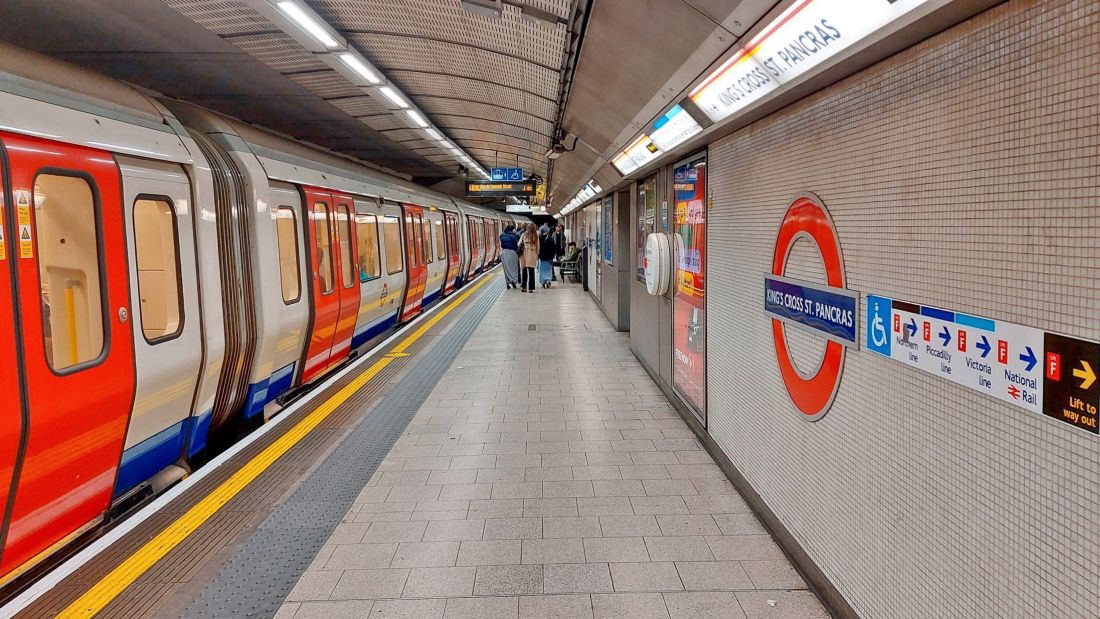
King’s Cross is slightly wider than Euston Square but not wider than Great Portland Street!
Let’s look a little bit further afield at other stations on this ‘one horse’ tube line that My London seems to think it is. King’s Cross and Farringdon are infinitely far busier stations. Yet these can’t really be any bigger than Great Portland Street in terms of platform space. King’s Cross is one of the busiest stations on the Underground – with 72.12 million passengers in 2023 (though that includes the station’s other tube lines too). Compare that with Great Portland Street which had a mere 5.35 million passengers in 2023! Both King’s Cross and Farringdon very clearly have a footfall dozens of times larger than Great Portland Street – and Farringdon happens to be the eight busiest station in the UK! If Farringdon could have the constant platform width Great Portland Street has then things would be so much better – in fact Farringdon would be better built for purpose too!
Even though its a more modern construct, Kings Cross sub surface station has platforms that aren’t really any wider – and by gawd this station gets extremely overcrowded compared to Great Portland Street and Euston Square – there’s barely space for both passengers boarding and alighting to squeeze past others standing on the platforms! And that even though there are several sets of entrances/exits! Once again a newer station and ‘better built for purpose’ most definitely comes to mind!
There are quite narrow sections at these other stations too. King’s Cross has one on the westbound but fortunately its not an area that’s overtly critical in terms of the station’s operability. In contrast to King’s Cross there’s Farringdon’s westbound platform. This goes from very narrow to wide back to very narrow again and then to sort of wide-ish and then once again back to very narrow. Not only that there’s stairs that come straight onto the platform at an awkward angle and numerous roof pillars that make it difficult to negotiate parts of the platform especially with luggage or buggies. Its full of nightmares for the station’s operating staff and its most unpleasant when this platform gets overcrowded.
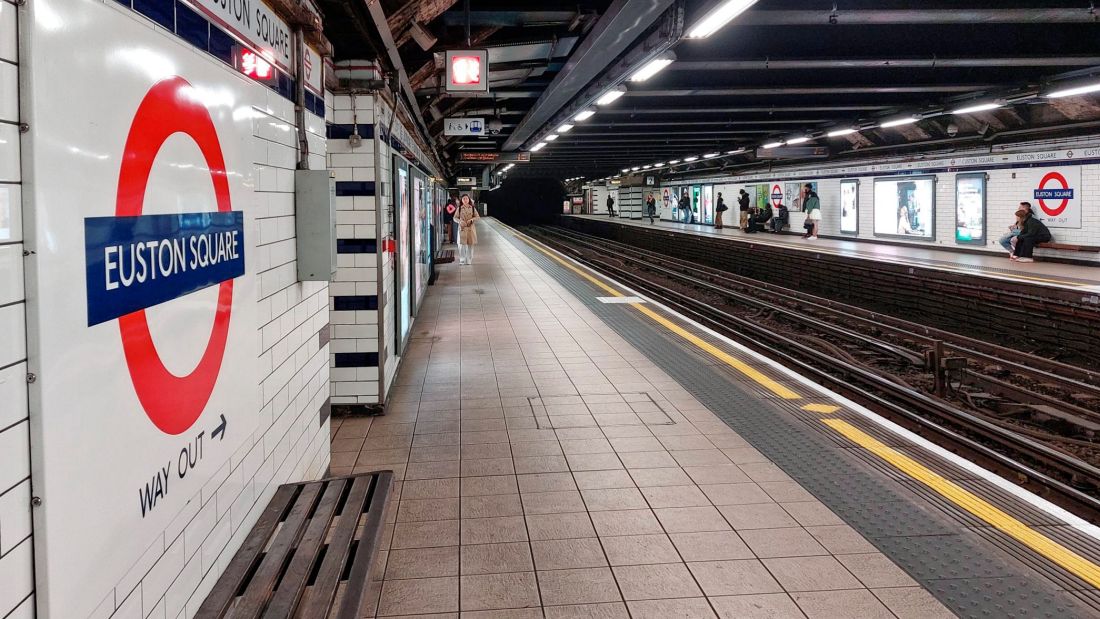
It might not be noticeable in my photograph of this ‘built for purpose’ station but the platforms do get narrower at Euston Square! Plus the entrance/exits are awkwardly placed at one end of the platforms. The fact the station has just one pair of tracks is certainly astounding!
Despite my sheer and immense difficulties in communication – and not being able to do what those in My London could easily do – I attempted to find out whether Great Portland Street station has any less of a platform capacity than the others. As far as I can ascertain Great Portland Street has platforms that are approximately 14 feet wide at their maximum whilst King’s Cross can only manage a maximum of 12 feet six inches. Euston Square is about 12 feet wide (it however narrows by around six inches on the older parts of the platforms). Clearly both King’s Cross and Euston Square have an overall narrower platform profile than Great Portland Street station! Surely these two should therefore be considered as having a ‘more intense’ situation? Well they do – but My London doesn’t seem to think so!
What is important is Great Portland Street station distributes the passenger loadings along its platforms more evenly because the entry/exits from these are roughly towards the centre. Compare that with Euston Square where the entry/exits are at one end and just the western half of Euston Square station’s platforms get invariably overcrowded whilst the other half stays relatively empty. In that case Great Portland Street station is most definitely more built for purpose whereas Euston Square is not!
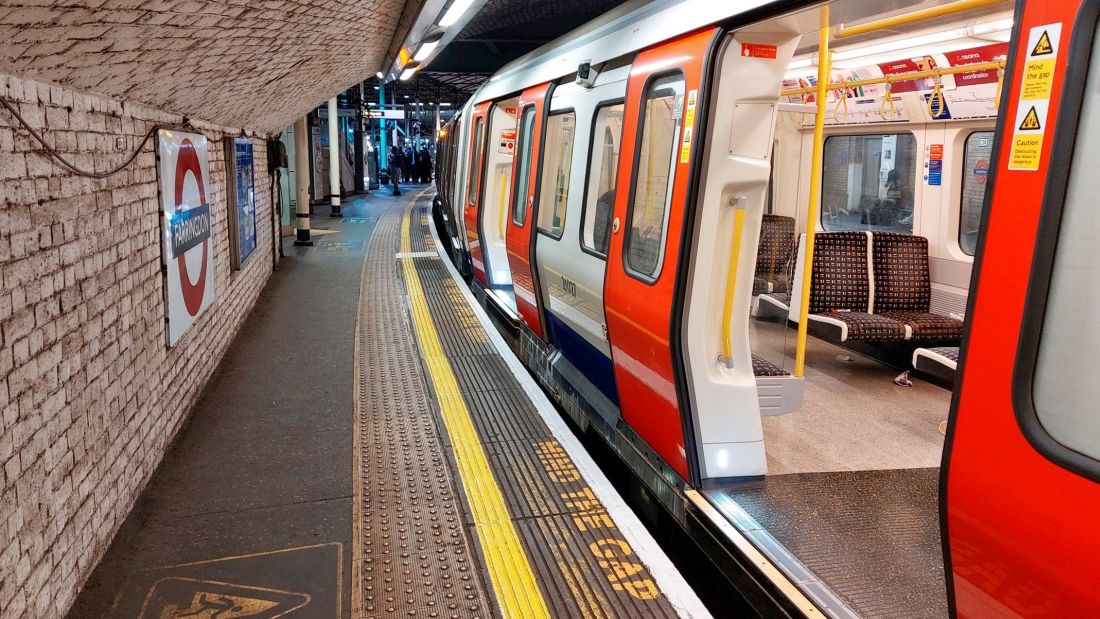
Certainly a stopping point that’s built for purpose! The westbound platform at Farringdon is considerably narrow and the train/platform interface is absolutely dire. Look at the height and gap between train and platform! By the roundel the platform is just 6ft 8 inches wide! So many people fall into the gaps along this westbound platform – and what makes it even more sobering is Farringdon is one of the WORST Category A accessible stations that its said to be! Its designation ought to be Category B3 at the most!
I couldn’t ascertain the maximum widths of the platforms at Farringdon. One reason is unlike the other stations there are just too many variations. The westbound platform in a lot of places is considerably narrower than other stations. What about the eastern end of the station’s westbound platform? That can hold very few passengers and often these are in a single row – anymore than that would be deemed overcrowding. I personally took a risk to measure it with a tape and its approximately one carriage length of platform that has just 6ft to 6ft 11inches of width! In fact its exactly 6ft 8 ins (2.32metres) wide by the roundel. No doubt its a platform that’s built for purpose as the My London teams would like it to be!
Here’s the link to the My London article. One never knows, but by clicking on that link it might generate a little more money for that publication. Isn’t that extremely good? After all I’m not denying them a bit of earned income – especially as I don’t even earn a single cent with the intensive stuff I produce on London Rail. But I don’t like their means of asserting some things that are questionable especially when its about the London Underground. Besides, the veracity of that very newspaper has oft-times been called into question on railway forums and social media. Think about that!
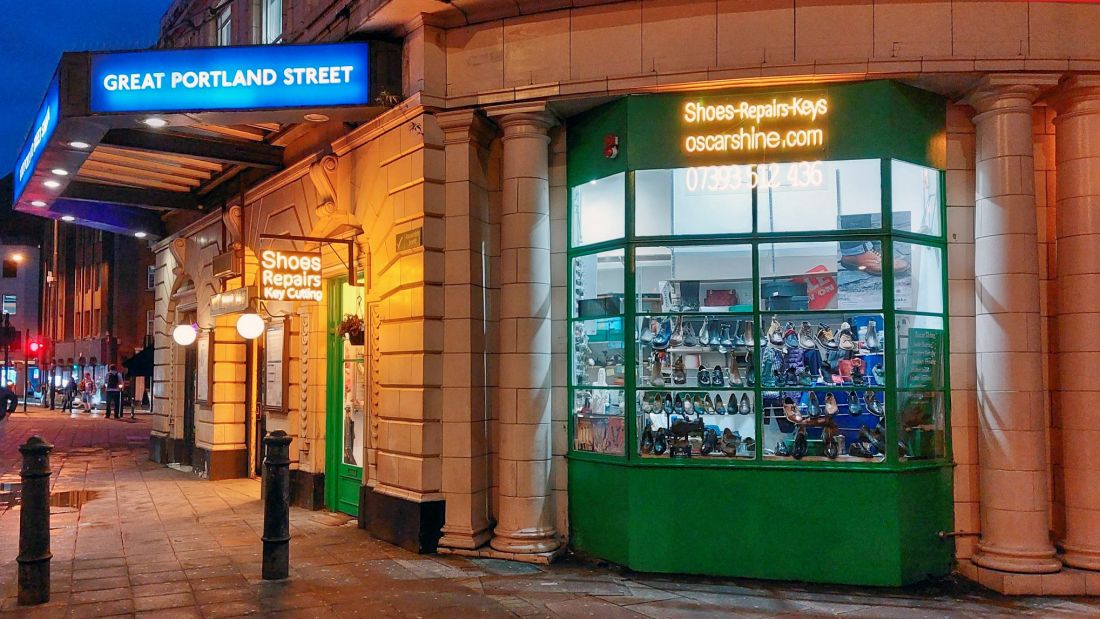
Leave a Reply